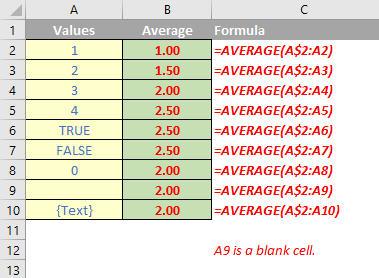A to Z of Excel Functions: The AVERAGEA Function
26 September 2016
The AVERAGEA function
Similar to the AVERAGE function (discussed in our last A to Z of Excel Functions blog), this function calculates the average (arithmetic mean) of the values in the list of arguments, i.e. the key difference is that this works on the value of the argument rather than assume the argument is a number. Essentially, this means that the AVERAGEA function is different from the AVERAGE function in that it treats TRUE as a value of 1 and FALSE as a value of 0.
The AVERAGEA function measures what is known as “central tendency”, which is the location of the centre of a group of numbers in a statistical distribution. There are three common measures of central tendency:
- Average: the arithmetic mean, calculated by adding a group of numbers and then dividing by the count of those numbers. For example, the average of 2, 3, 3, 5, 7, and 10 is 30 divided by 6, which is 5
- Median: the middle number of a group of numbers; that is, half the numbers have values that are greater than the median, and half the numbers have values that are less than the median. For example, the median of 2, 3, 3, 5, 7, and 10 is 4. If the number of values in the selection is an even number, the median is defined as the midpoint between the two central numbers
- Mode: the most frequently occurring number in a group of numbers. For example, the mode of 2, 3, 3, 5, 7, and 10 is 3.
For a symmetrical distribution of a group of numbers, these three measures of central tendency are all the same. For a skewed distribution of a group of numbers, they can be different.
The AVERAGEA function employs the following syntax to operate:
AVERAGEA(value1, [value2], ...)
The AVERAGEA function has the following arguments:
- value1: this is required
- value 2, …: subsequent values are optional. You can have between one and 255 cells, ranges of cells.
You should bear in mind that when you average cells, there is a difference between empty cells and those containing the value zero. If you have cleared the ‘Show a zero in cells that have a zero value’ check box in the Excel Options dialog box in Excel, you may not realise zeros are being included in calculating the average. To locate the ‘Show a zero in cells that have a zero value’ check box, go to File -> Options -> Advanced and look under ‘Display options for this worksheet’.
Please see my example below:

We’ll continue our A to Z of Excel Functions soon. Keep checking back – there’s a new blog post every other business day.

